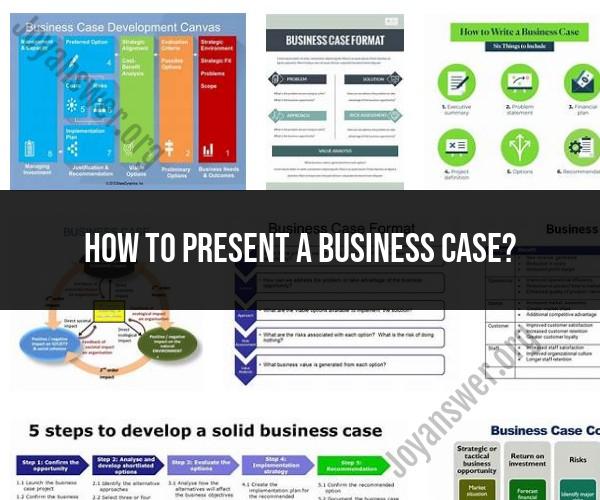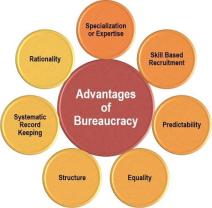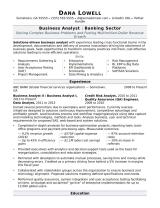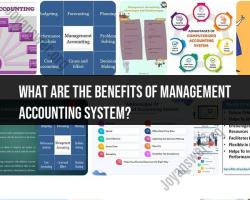How to present a business case?
Presenting a business case effectively is crucial for securing buy-in and resources for your project or proposal. Here are strategies for effective communication when presenting a business case:
Know Your Audience:
- Understand who you're presenting to and their priorities, concerns, and decision-making criteria.
- Tailor your message to resonate with your audience's interests and needs.
Structure Your Presentation:
- Start with a clear and compelling executive summary that provides an overview of the key points.
- Use a structured format with a clear beginning, middle, and end.
- Include an introduction, problem statement, solution, benefits, and conclusion.
Define the Problem:
- Clearly articulate the problem or opportunity your business case addresses.
- Use data and evidence to support your claims and quantify the impact of the problem.
Present a Compelling Solution:
- Describe your proposed solution in detail, including how it addresses the problem.
- Highlight the benefits and advantages of your solution, such as cost savings, revenue generation, or efficiency improvements.
Provide Evidence and Data:
- Back up your claims with data, research, and real-world examples.
- Use charts, graphs, and visuals to make complex information more accessible.
Anticipate Questions and Concerns:
- Be prepared for questions and objections from your audience.
- Address potential concerns and provide solutions or mitigations.
Consider Risks and Mitigations:
- Acknowledge potential risks associated with your proposal.
- Discuss strategies and contingencies for mitigating these risks.
Financial Analysis:
- Include a detailed financial analysis, such as cost-benefit analysis, ROI, payback period, or NPV.
- Clearly show how the proposed project will impact the organization's financials.
Stakeholder Engagement:
- Highlight how stakeholders will be involved and impacted.
- Show that you've considered their input and concerns.
Use Engaging Visuals:
- Create visually appealing slides or documents to support your presentation.
- Use visuals to simplify complex information and reinforce key points.
Practice and Rehearse:
- Practice your presentation multiple times to ensure you are confident and can deliver it smoothly.
- Gather feedback from colleagues or mentors to improve your delivery.
Engage Your Audience:
- Encourage questions and interaction during your presentation.
- Use storytelling and anecdotes to make your case relatable.
Maintain Confidence and Professionalism:
- Stay composed and confident throughout your presentation.
- Dress appropriately and maintain professionalism.
Follow Up:
- After the presentation, follow up with stakeholders to address any additional questions or concerns.
- Provide any additional information or clarifications as needed.
Be Flexible:
- Be open to feedback and adjustments based on the response you receive.
- Adapt your presentation as necessary to address concerns or new information.
Remember that presenting a business case is not just about conveying information but also about persuading your audience to support your proposal. Effective communication and a well-structured presentation can greatly increase your chances of success.
Presenting a Business Case: Essential Steps and Components
- Define the problem or opportunity. What is the business challenge that you are trying to solve? What is the market opportunity that you are trying to capitalize on?
- Develop a solution. What is your proposed solution to the problem or opportunity? What are the benefits of your solution?
- Analyze the costs and risks. How much will your solution cost to implement and maintain? What are the potential risks associated with your solution?
- Quantify the benefits. What are the financial and non-financial benefits of your solution? How much money will your company make or save as a result of your solution?
- Develop a timeline and implementation plan. How long will it take to implement your solution? What resources will you need? What are the key milestones?
- Make a recommendation. Should your company implement your solution? Why or why not?
Components of a business case:
- Executive summary: A brief overview of the business case, including the problem or opportunity, the proposed solution, the costs and risks, the benefits, and the recommendation.
- Problem statement: A detailed description of the business challenge or market opportunity.
- Solution overview: A detailed description of the proposed solution, including its features, benefits, and how it will be implemented.
- Cost-benefit analysis: A quantitative analysis of the costs and benefits of the proposed solution.
- Implementation plan: A detailed plan for implementing the proposed solution, including a timeline, resources, and key milestones.
- Recommendation: A clear and concise recommendation on whether or not the company should implement the proposed solution.
Building a Compelling Business Case Presentation: Best Practices
- Know your audience. What are their needs and interests? What are their concerns? Tailor your presentation to your audience.
- Be clear and concise. State your problem or opportunity, solution, benefits, and recommendation clearly and concisely. Avoid jargon and technical language.
- Use data and visuals to support your claims. Data and visuals can help to make your presentation more persuasive and easier to understand.
- Be enthusiastic and passionate about your topic. If you are excited about your business case, your audience will be too.
- Practice, practice, practice! The more you practice your presentation, the more confident and polished you will be.
Business Case Presentation Mastery: Methods and Techniques
- Hook your audience. Start your presentation with a strong hook to grab your audience's attention. This could be a story, a question, or a statistic.
- Tell a story. People are more likely to remember and be persuaded by stories than by facts and figures alone. Weave a story throughout your presentation to illustrate your points and connect with your audience on an emotional level.
- Use visuals. Visuals can help to make your presentation more engaging and easier to understand. Use charts, graphs, images, and videos to support your claims and illustrate your points.
- Be interactive. Involve your audience in your presentation by asking questions, conducting polls, or having them participate in activities. This will help to keep them engaged and make them more likely to remember your message.
- End with a call to action. Tell your audience what you want them to do next. This could be to approve your budget, give you feedback, or take a specific action.
By following these essential steps and components, you can create a compelling business case presentation that is persuasive and effective.











